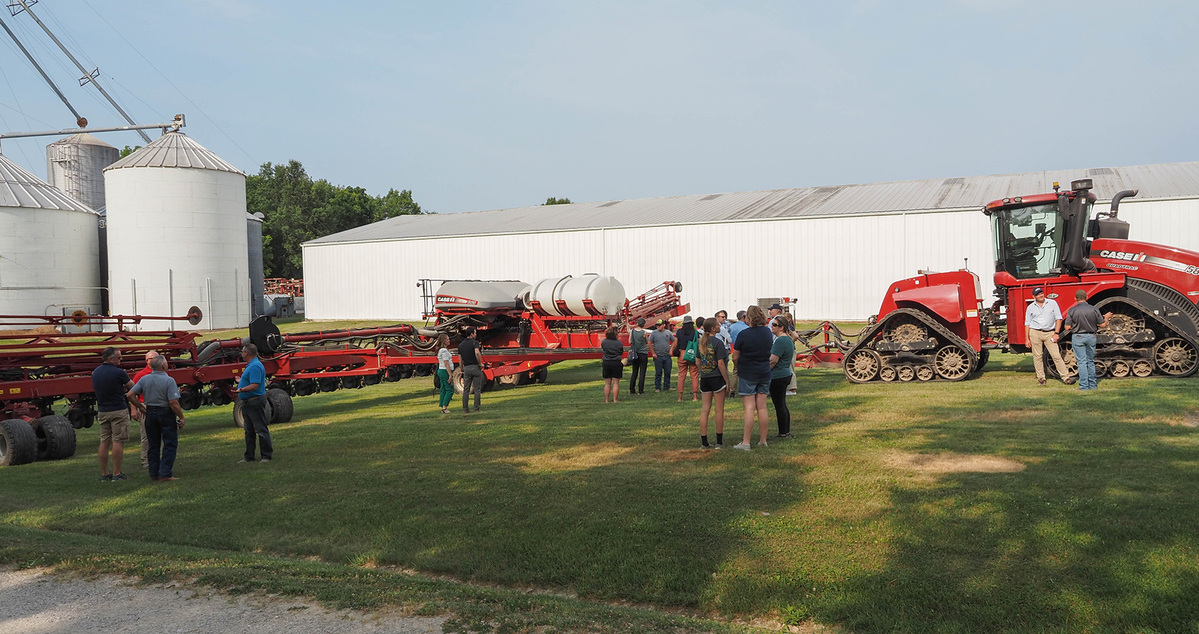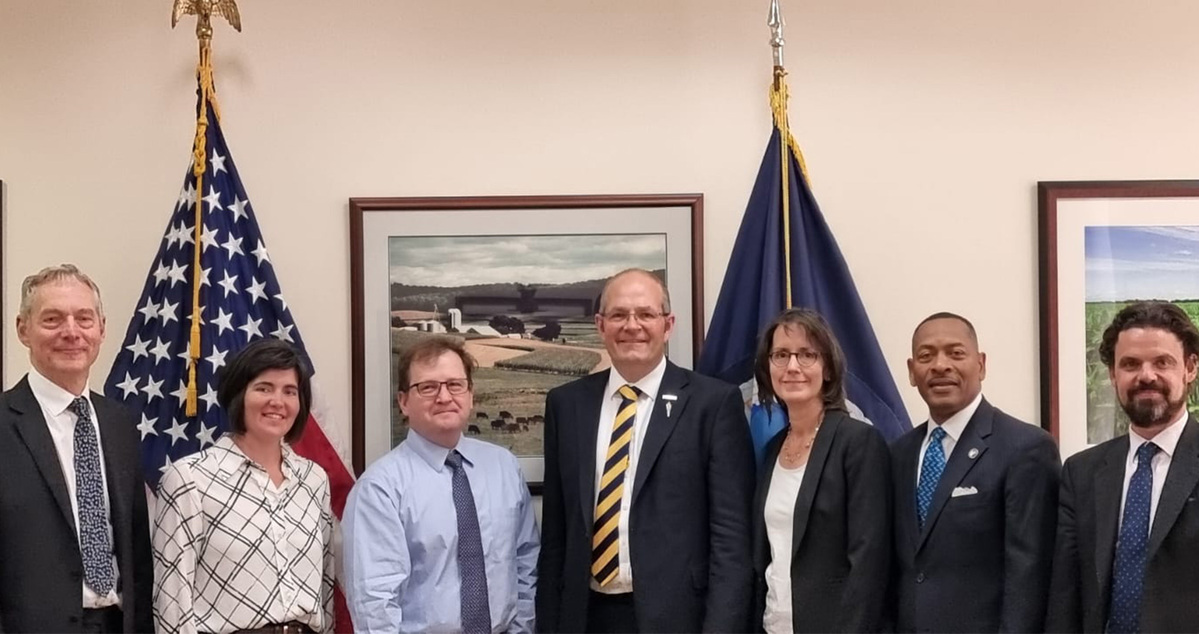Illinois state is the number one producer of soybeans in the US, the number two producer of Corn (Maize) and the number four producer of Hoggs (pigs) along with being a significant producer of wheat, cattle and dairy produce.
Similar challenges
Despite the size and scale of operations in the State many of the challenges faced by farmers in Illinois are very similar to our own. Returns from crops and livestock are often marginal at best, there is consolidation occurring within the dairy sector, access to labour is a real issue for fruit and vegetable producers and water quality is a hot topic of conversation. High land prices (we were quoted circa $14,000 acre) meant that young people were finding it increasingly difficult to enter the industry and we noted that sons and daughters even on large acreage farms often needed off farm income to supplement their farming activities.
Our discussions highlighted:
- Vaccines for AI and TB and a DIVA test to be urgently approved by the World Organisation for Animal Health
- Clear communication needed around gene editing and gene-modified organisms
- Better administration needed of the US beef tariff rate quotas, moving to a licence-based system instead of first come first served
- Access to labour issues facing horticulture growers on both sides of the pond
- Identifying and removing non-tariff barriers to UK agri-food exports, building on the recent re-admission of lamb into the US
- Collaboration between farmers and government to address water pollution
- Support for the next generation of farm leaders.
Impact of sustained dry weather
Our visit coincided with a sustained period of hot dry weather with much of the land and cropping showing signs of stress. We felt very much on the front line of climate change, although the farmers we met generally seemed less concerned or convinced that what we were seeing were the early signs of a significant change in weather patterns.
That said, Illinois, and in particular the St Louis region of the State, has possibly the highest concentration of plant scientists anywhere in the world and the work being undertaken on plant breeding and soil management in conjunction with the farming community by research institutes in the area was inspiring. Farmers were embracing new varieties of crops with an increasing number looking at min till and cover cropping to protect their fragile soils. Farmers and researchers alike would point to the positive role that biotechnology was playing in maximising crop yield whilst reducing the use of pesticides and herbicides.
Political engagement
During the visit we met with Senior State, Senate and Federal Government officials and administrators involved in policy development and implementation. What was heartening was that almost every official we met expressed their passion and support for US agriculture, with many having been born and raised on farm, studied agriculture related courses at college and subsequently devoted their entire careers to agriculture and the farmed environment. You really got the impression that they were fighting hard to support US farmers within their respective administrations.
The US Farm Bill
The visit also gave us an opportunity to understand more about the US Farm Bill and the policies underpinning US agriculture. The US Farm Bill is one of the largest and most expensive pieces of legislative policy in the US. Over $1 trillion dollars will be spent on the Bill over the next ten years although over 80% of this budget is committed to nutrition assistance programmes providing support to around 41 million Americans on low incomes. The remaining 20% of the budget is focussed on agriculture and includes providing some direct support to farmers, conservation programmes and crop insurance.
In addition, the Federal Government will provide support to farmers at times of crisis and natural disaster e.g. hurricanes, flooding, drought or wildfires. Farmers highlighted to us how important crop insurance and disaster payments have been over the past 20 years with many stating that they would not still be farming without the safety net provided by Government. State Government agencies will often provide some additional support, mainly around the environment, as well as generally being responsible for the implementation of Federal and State regulation.
Agricultural Attachés
For much of the visit we were also joined by officials from DEFRA, the UK embassy in Washington, the British Consulate in Chicago and the recently appointed Agricultural Attaché to the US. As a Union we have lobbied for the appointment of Agricultural Attaches to be appointed around the globe to promote and build new markets for our produce. We welcomed the recent announcement from the Prime Minister’s Food and Farming Summit in May that funding for an additional five will be made available. There is no doubt that these individuals, working closely with representatives from the UK food and drink industry can play a crucial role in helping us reach our goal of increasing the value of UK food and drink exports by 30% by 2030.
We see opportunities for Welsh lamb in the US, visiting one of the main supermarkets in Illinois we failed to find any lamb on the shelves, it appears that many Americans have only been familiar with US lamb that is generally far heavier and fatter than our great tasting PGI Welsh Lamb. Whilst it will take some time to grow a viable market for lamb in the US, there are areas and markets in the US where our lamb can gain a valuable foothold and so we would support the continued efforts of HCC in this market.

Robust and frank debate
Not all discussions were constructive; robust and frank debate was held in Washington on hormone treated beef and chlorine washed chicken, many in the US take great offence that we in the UK have rigorously fought to keep these products out of our domestic market. We need to continue to make it clear to negotiators on both sides of the Atlantic that we cannot accept produce in the UK that will undermine the production standards that farming in Wales and across the UK must adhere to.
There are also areas where collaboration between UK and US producers would be mutually beneficial. We held a good discussion with National Cattlemen’s Beef Association about gaining the support of scientists and farming organisation from around the globe to press for the GWP* accounting method for methane emissions to be adopted globally. This could be a real game changer in how livestock production is considered within the climate change debate and discussions will continue on how we can see work together to ensure that this latest science is adopted.
Farm tours
Without doubt the most rewarding part of the trip was the opportunity to spend time on farm talking to farming families passionate about farming and food production. Families who opened up their farms and shared their stories, inviting their neighbours around and providing wonderful hospitality. Whatever and wherever we may farm there is always so much that brings us together.

